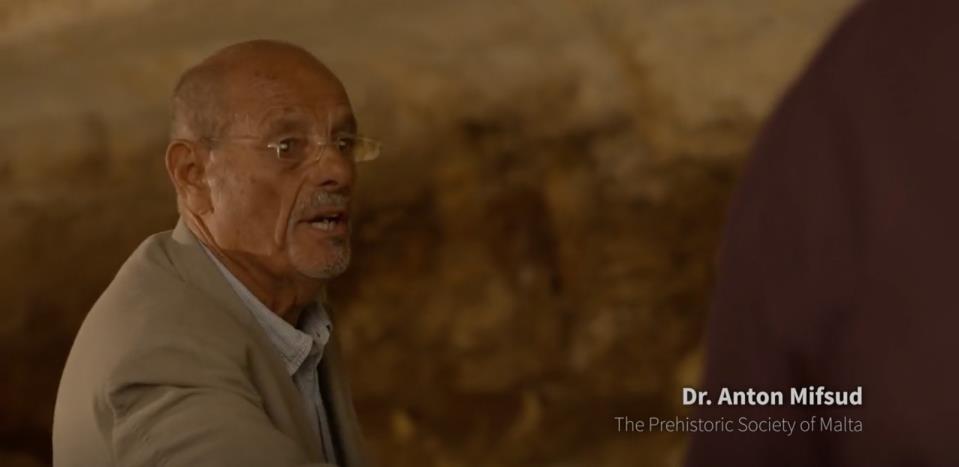New Netflix series titled Ancient Apocalypse suggests the possibility that the famous Maltese megalithic temples are in fact much older than Malta’s prehistory says.
Journalist Graham Hancock, the protagonist of the series who explored prehistoric sites as part of his mission to find clues about lost civilizations dating back to the last Ice Age, says that Malta’s prehistory, especially when it comes to the ages of the megalithic temples, is older than what archaeologists say.
Hancock visited Gozo’s Ġgantija, the oldest of the Maltese temples. The series shows a visual reconstruction of what the temple must have looked like thousands of years ago. The complex in its prime shows an impressive and towering three-storey temple with walls painted in red.
Hancock suspects that everything archaeologists have said about Malta’s past, could be wrong.
According to Malta’s official timeline, the first people settled here around 7,900 years ago. It is said that they were simple, Stone Age farmers who crossed over to Malta on a raft from the neighbouring island, Sicily.
They brought with them the first domesticated animals and plants, and as people settled, they developed their own culture.
The Ggantija temples are said to have been built 5,600 years ago, though there is no written sources which says this, nor reliable carbon dates.

“None of the prehistory of Malta stacks up,” Hancock (above, screenshot from series) said.
Strolling around the towering megaliths, which make up the tall structure, Hancock said that he is convinced there was another lost civilization which could have built the extraordinary structures way before the first farmers from Sicily arrived on the island.
Hancock said that it’s possible that an older civilization walked to Malta, back when the island was connected to Sicily and the remaining of Europe. During the last Ice Age, around 12,000 BC, animals migrated to the warmer Malta to survive the harsh period.

“Humans could have followed them,” Hancock said. Hancock spoke with the president of the Prehistoric Society of Malta, Anton Mifsud (above, screenshot from series), who has studied the site of Ghar Dalam, where animal parts and fossils were found from the Ice Age.
He said that archaeologists found Neanderthal teeth in the stalagmites of the ancient cave, but the results to confirm how old they were, were not divulged. Mifsud held an extensive analysis on the teeth, which then confirmed that they were Neanderthal.
This suggests that there were humans in Malta during the Ice Age.
Hancock also visited the Mnajdra temples, where he said that whoever built the temples had knowledge of the cosmos.
“We know that they observed the rising of the sun and the position of the stars and incorporated that into their architecture,” Hancock said. During the spring and autumn equinoxes, the rays of the rising run exactly bisect the temple entrance, flooding the temple with light.
“Mnajdra and other temples may be part of a larger, ancient astronomical project and would rewrite the accepted timeline of Malta’s prehistory,” Hancock said.
He spoke with Dutch researcher Lenie Reedijk, who wrote a book about the Sirius Rising theory, which puts forth the idea that the temples were constructed thousands of years before archaeologists believe they were built, to point at the brightest star in the sky, Sirius.
“The temples are oriented to one star, Sirius. At some point in time, this star passes through all the entrances of the temples,” she said.
As Sirius shifted positions due to the Earth’s axis, it forced humans to build more of the temples, to align with the star’s position.
Hancock and Reedijk believe that Malta’s megalithic project began thousands of years before. Hancock also provided an explanation as to why the star Sirius. He said it could simply be that it was the brightest star in the sky, but it could also be matched with Ancient Egypt.
He associated the famous myth of Osiris and Isis, where Osiris established rule of law and taught civilizations agriculture. Osiris left Egypt under Isis’ rule, while he travelled the earth, teaching civilization skills such as the construction of such temples and knowledge of the stars.
Hancock also believes that there could be further evidence of older, lost civilizations beneath the waves, as Malta was connected to mainland Europe before rising sea levels created the island.